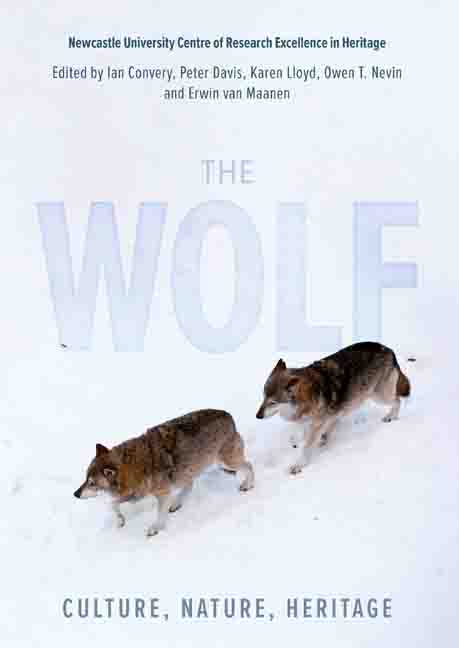Book contents
- Frontmatter
- Dedication
- Contents
- List of Illustrations
- Preface and Acknowledgments
- List of Abbreviations
- Poem: Trophic Cascade by Camille T Dungy
- Foreword
- Part I Imagining the Wolf
- Part II What Makes the Wolf
- Part III Return of the Wolf
- Part IV Personal Encounters
- Afterword: The Ecological Disadvantage of Living on an Island
- Glossary
- List of Contributors
- Index
14 - The Sweetness of Freedom: Reflections on the Occasion of the Japanese Wolf
Published online by Cambridge University Press: 10 January 2024
- Frontmatter
- Dedication
- Contents
- List of Illustrations
- Preface and Acknowledgments
- List of Abbreviations
- Poem: Trophic Cascade by Camille T Dungy
- Foreword
- Part I Imagining the Wolf
- Part II What Makes the Wolf
- Part III Return of the Wolf
- Part IV Personal Encounters
- Afterword: The Ecological Disadvantage of Living on an Island
- Glossary
- List of Contributors
- Index
Summary
In the monumental work Ab urbe condita about the foundation and rise of Rome to world power by the Roman historian Titus Livius (d c. AD 17), the author speaks in detail about the transition from monarchy to Roman republic. Livy describes this early transition period (509–468 BC) as an unavoidable phase, because the Romans ‘had not yet tasted the sweetness of freedom’ (libertatis dulcedine nondum experta).
Almost simultaneously with Livy, the Roman poet Gaius Iulius Phaedrus (d c. AD 50/60) used the same phrase about the sweetness of freedom, which at that time was obviously part of the metaphor repertoire of a literary scholar, in one of his animal fables that have made him famous. In the didactic introduction to the fable of the wolf and the dog, the narrator announces that he will report ‘how sweet freedom is’ (quam dulcis sit libertas).
Phaedrus's Latin adaptations of the originally Greek fables ascribed to Aesop found several other adapters in Europe for centuries, and towards the end of the 16th century Portuguese missionaries even printed a Japanese translation of selected animal fables for the inhabitants of the island kingdom as an aid to conversion to Christianity. Somewhat surprising at first glance, the fable of the wolf and the dog was missing, although the Japanese knew two, if not three, Japanese wolf species; and, moreover, they also knew non-freemen (slaves) within their archipelago for centuries. In the following we look for answers to the question of whether the lack of the wolf-dog fable was just a coincidence or whether there might have been other reasons.
EXTINCTION AND REVIVAL
The Japanese wolf became extinct around the turn of the 20th century. However, it did not die out, as did many other species, due to changed ecological conditions and a shortage of wild life habitat. Rather, the wolf was chased only and killed by the Japanese, because it, and in particular the northern variant, the Hokkaidō wolf, was allegedly a threat to newly imported developments in pasture utilisation from America (horse breeding).
- Type
- Chapter
- Information
- The WolfCulture, Nature, Heritage, pp. 151 - 160Publisher: Boydell & BrewerPrint publication year: 2023



